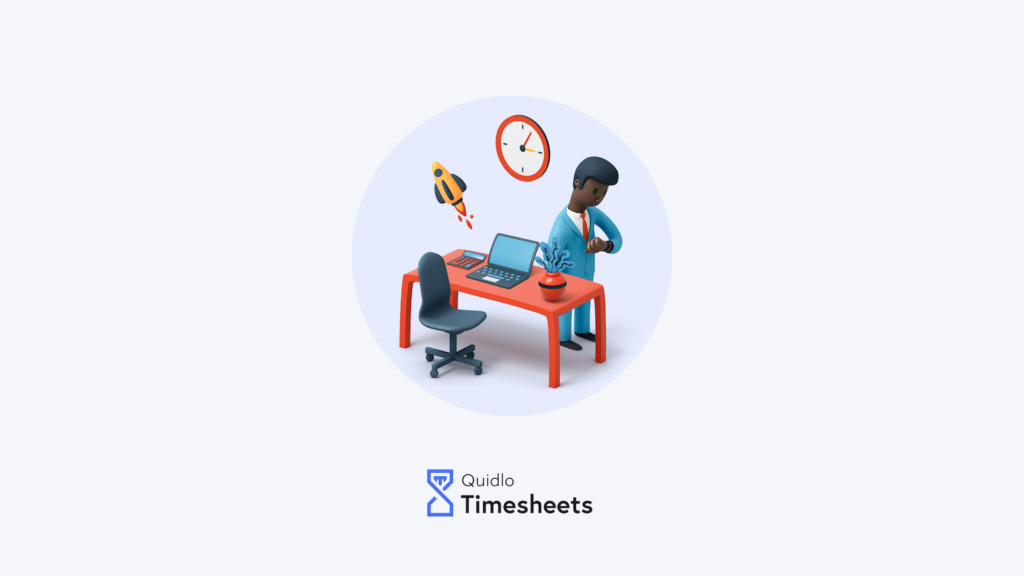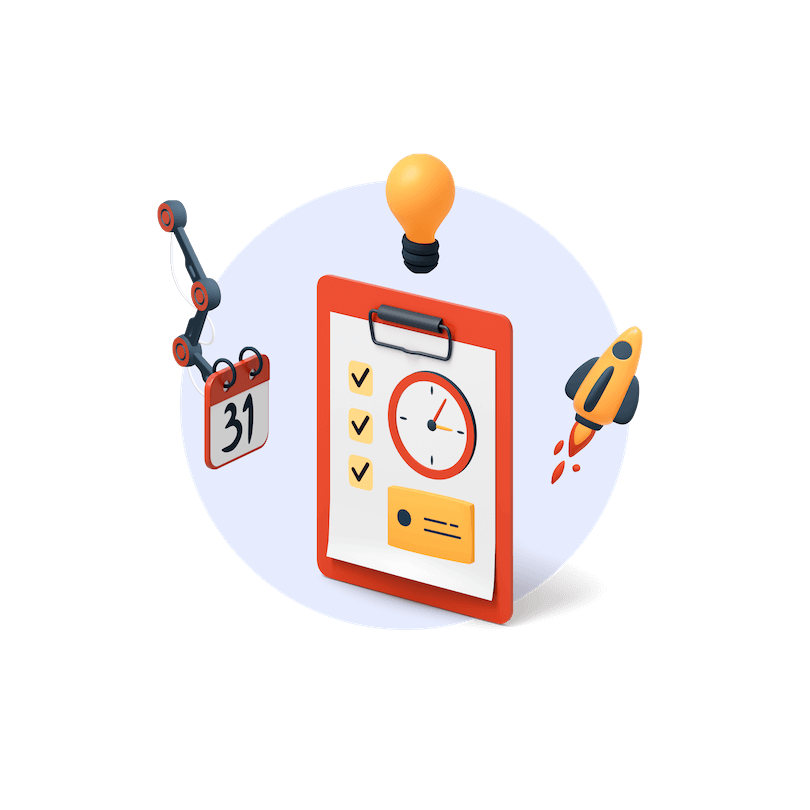The Pomodoro technique is one of the highly sought time management techniques. People swear by it, but it also causes a huge amount of stress for others, as it either obstructs them when they’re in a flow stage and working, or it exhausts them into dragging out work for longer than they like to work.
If you love the Pomodoro technique, but it frequently dreads you to do it, you must consider trying the Flowtime technique. Flowtime is a great alternative to the Pomodoro time management technique made for people who love the concept of being focused on a single task but hate it when the pomo timer goes off.

Table of Contents
Introducing the Flowtime Technique
Since Flowtime is a twist to the popular Pomodoro technique, let’s revisit what Pomodoro is.
Pomodoro is a time management technique based on budgeting your time into a 25-minute increment and 5-minute break. After you’ve finished four work periods (referred to as Pomodoro), you take a more extended break—15 to 30 minutes.
You see, Pomodoro is based on a 25-minute work interval. That’s why most people feel constrained by such brief timing. That means they’re likely to get interrupted from their detailed work sessions. Meanwhile, twenty-five minutes can frequently feel like forever, as some tasks take less time. You would have to either break the Pomodoro or stretch out the assignment.
Two remarkable use cases for the Pomodoro technique are those tasks you don’t like doing or don’t need a lot of thought on. It works with such tasks, as it rewards you at every Pomodoro, a small push of encouragement everyone needs.
Nonetheless, the Pomodoro technique might fail if you’re working on things that need you to be creative, innovative, or solve a certain problem. Obstructing how much time you have to do such tasks could stop you from entering a flow state. That means you won’t be able to tap into your fullest potential.
On the other hand, the Flowtime technique measures your productivity habits and focus with a timed system. Therefore, multitasking is highly discouraged in favor of solo work, where you remain focused on a single task until it is complete.
That method has become widespread as an alternative to the Pomodoro technique, which comprises a fixed amount of work followed by breaks. Nonetheless, the time intervals can feel stressful and restrictive even though most have found the Pomodoro technique highly efficient.
With the Flowtime method, you are not bound by such time requirements. As such, you can stay focused for as long as possible without being distracted by a timer.
How Does the Flowtime Technique Solve Pomodoro Technique’s Problem?
Flowtime works like this: you begin by jotting down a single activity you plan to focus on during one Flowtime session. You then jot down the time you start working on the task and work on that task until you feel you need a break.
You don’t need to race against the clock to complete your task. Thus, all you must to is concentrate on the work. When you begin feeling tired or your mind begins to wander off, you need to take a break.
It’s up to you to choose the length of the break. Many recommend taking a 5-minute break for all the work that lasts under 25 minutes. For tasks over 25 but under 50 minutes, take an 8-minute break.
Take a 10-minute break if you have worked for more than 50 but less than 90 minutes. Ultimately, if you have worked for over 90 minutes, it’s recommended to take a 15-minute break.
Nonetheless, the rules of the Flowtime technique aren’t that strict. That means you’re free to select a break time that works perfectly for you.
Steps for a Successful Flowtime Time Management
To begin using the Flowtime technique, you first must make a timesheet to help you handle your regular activities. You can do that manually or on a spreadsheet, whichever is more practical.
In a timesheet header, add the following column headers: task name, start time, end time, interruptions, working time, and interval. Your timesheet will be the major way to keep your tasks and create a flow that works best for you.
- Pick a task
Select a task you want to do. It must be specific and something you can finish in time. In short, don’t pick a task like “painting my house.” Select something such as “painting the door of my room.”
Choosing a broad task makes it challenging for you to get on with it. Try to break down what you are doing into the smallest manageable portions.
- Begin working on the task
Start by listing the activities you’ll work on in the suitable field on the timesheet. List the time you are beginning work. After you begin your task, the only rule you must observe is that multitasking isn’t permitted.
That will help you concentrate on what should be done and lessen any self-imposed interruptions.
- Work until you need a break
You can continue working on your listed task for as long as possible. Do you feel yourself getting tired after 30 minutes? Take a break. Also, it’s fine if you start at a productive pace, then lose track of time and end up working for an hour straight.
The concept is to know your standards and work on the segments that suit you. If you do not concentrate well on a specific task, work on them for shorter periods.
Do you get absorbed in other types of tasks? Maximize your production by working as long as you can stay focused.
You’ll notice that the longest period you can sustain is approximately ninety minutes. That corresponds to your Ultradian rhythm—the alternating periods of rest and alertness the brain experience throughout the day.
Studies demonstrate how taking regular breaks enhances productivity. It is one of the reasons mandatory breaks are part of the Pomodoro technique. However, there’s proof that the less structured approach of the Flowtime technique breaks works just as well.
- Take a break of suitable length
Don’t hesitate to do it when you need to take a break. Ensure you write down your downtime on the timesheet in the appropriate place. What’s more, you can take a short or long break but do not abuse the privilege. Or else, it will not be long before your breaks consume your time.
As a rule, take a 5-minute break for every 25-minute work and raise your break time for longer work periods. Use a timer to ensure you get back to your task on time. Once the break is over, record the time you returned to work and list the break’s length.
- Record interruptions as they happen
There will be times when you’ll be distracted while working. It can come in urgent mail, a phone call, or even the urge to use the restroom. When such things occur, record the incidence in the outage column in the timesheet. Always do your best to keep the distractions short, but do not try to block them.
That’s because you are unlikely to be successful, and often, the things that disturb you will have a higher priority than what you’re working on. Thus, it’s crucial to handle the distractions as you see fit rather than trying to resolve them.
- Repeat until your task is finished
Repeat the steps above until the project you’re working on is done. When completing every task, make sure you record the final downtime. You can also sum up your total work time when you complete a task or do the math at the end of the day.
What’s important is you should not leave any gaps in time control. Once completed, your timesheets will become an asset that improves your capability to make a work schedule that maximizes your daily production.
What Should You Do with the Timesheets?
Recording your work times and breaks will help you keep on top of your task, but there’s another critical reason to do that. Your timesheets will start to show how to make a regular schedule that is perfect for you.
At the end of every week, take the time to compare the timesheets. You can observe that specific patterns begin to show. For instance, you may see that your longest work periods often start before lunch or that particular parts of the day tend to be filled with disturbances. You can utilize that information to organize the following days more efficiently.
You like to group the most important activities into your most productive periods. For instance, suppose you’re reviewing detailed property records. You can take the time to do that if you know that you can focus without disturbances.
Meanwhile, you must plan less critical tasks for periods when you are most likely to be disturbed while working. Hence, you’ll know when to do it if you need time to return calls or respond to emails. That will make you more productive and eliminate errors in your work.
What Are the Benefits of the Flowtime Technique?
The key advantage of the Flowtime technique is seeing how much time you allocate to different tasks. You can also use that data to predict how long tasks will take in the future.
As a result, that can guide you in better handling your time. For instance, suppose you are adding a task to your calendar. You are no longer under or overestimating the block of time necessary.
That might not seem like a huge deal, but the last thing you like is to come late to a meeting because a to-do list item took longer than scheduled.
Another advantage is that Flowtime supports uni-tasking, unlike multitasking. You commit only ding one task between the time you begin and the time you decide to stop by picking one task and writing it down.
You can also utilize it to determine and remove interruptions by taking note of the most typical disturbances you experience throughout the day. Ultimately, this technique still encourages you to take breaks.
The only difference with the Pomodoro technique is that it is not mandatory. You take a break when necessary and not because the timer went off.
What Tools Can Help with the Flowtime Technique?
A spreadsheet or pen and paper can help you keep track of the times you’re taking breaks and focusing. Even though both of these techniques work fine, reviewing details by hand is inefficient. On top of that, scrolling through long spreadsheets full of info can be tedious.
Thus, you might also like to use the following tools to help you with Flowtime.
- FlowTime – A Chrome extension that lets you increase your productivity by adding a flow state using a Pomodoro-like timer and blocking unwanted sites.
- TMetric – It allows you to see your day as a visual timeline. Dark gray symbolizes focus periods, and light gray symbolizes breaks. Hover over it to see how much time you spent on every entry.
- Toggl – A simple-to-use app that tracks your break and work sessions automatically. You can create a report to evaluate how you are spending your time.
- Calendar – The Calendar tracks and assesses how, where, and with whom you spend your time using machine learning. It also makes smart recommendations on how to schedule your time best.
- Quidlo Timesheets – A time tracking app that lets you monitor, handle, and boost your productivity and efficiency. You can easily monitor working time, see project milestones and handle payments. It also supports time editing and manual entries to guarantee accuracy.
Conclusion
The Flowtime technique is the ideal example of how to take something that most people already utilize and customize it so that more people can now enjoy it. Time management techniques were made in the first place to interrupt the way people were doing work up until that point.
So, why don’t you give Flowtime a try, even when the Pomodoro technique works for you? Who knows, a Pomodoro and Flowtime hybrid might be ideal for you and your unique needs.
2






